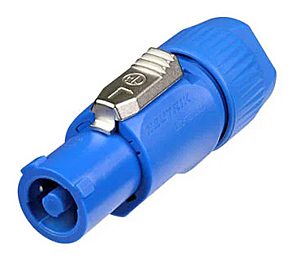Digital Lighting Enhances your Theatrical Experience
If you have not attended a theatrical performance recently, you may be surprised by the extent that advanced digital lighting contributes to your experience. Theatrical lighting has evolved from candlelight foot lamps to laser video projection systems.
Until late in the 17th century, theatrical performances were held outdoors in the daytime using only natural light. As they moved indoors, a few theaters used candles or oil lamps, but most productions remained daytime events.
One of the first major innovations in theatrical lighting was the introduction of limelight in the 1820s, which became widespread in the mid-19th century. Limelight was produced by directing a hydrogen and oxygen flame to a piece of calcium oxide. The resulting light was intense and focused, making it well-suited for illuminating the stage.

Limelight
Carbon arc lamps were the first practical application of electric lighting in theatres when they were introduced in the late 1800s. An electric arc was created between two carbon rods which produced an intense white light with temperatures reaching 6500° F. By careful management of the gap between the rods, an arc could be maintained for relatively long periods. The period from 1880 to 1920 was considered the golden age of the arc lamp, although arc spotlights were used into the 1960s.
Introduction of the electric incandescent lamp by Thomas Edison in the late 1870s forever changed the technology of theatrical lighting.

Incandescent light bulbs added the ability to dim or brighten light as needed. They were safer and could quickly be replaced when they burned out. Colored light could be easily created by placing color gels in front of the lamp.
By the early 20th century, incandescent lighting had become the standard in theaters, as many variations of theatrical lighting instruments were introduced and remain in use today. Lamps designed for applications that range from broad areas to tightly focused spots are hung from bars above and in front of the stage. Others may be mounted on poles located on the sides while others placed at the rear of the floor illuminate the backdrop.

Theater lamps
Beginning around 2008, the replacement of incandescent lamps with light emitting diodes (LEDs) again revolutionized the way stages are illuminated. High-output dimmable LEDs consume a fraction of the current, generate much less heat, and are more reliable. LED fixtures can produce thousands of programmable colors, eliminating the need for colored gels and greatly increasing the flexibility of each fixture.

Intelligent lights in the form of motor driven moveable fixtures allow designers to program the degree of pan and tilt, color, beam shape, intensity, and projected pattern of each lamp, greatly increasing design flexibility.

Stage pin connector
Most theatrical lamps today are connected to power using the standard stage pin connector that was originally introduced to the theatre in the 1920s.

More recently, powerCON connectors from Neutrik (available from Mouser Electronics) are becoming an alternative choice due to its simple twist-lock design, rugged plastic shell, and IP65 sealing. The three-circuit silver plated contacts are rated to 20 amps / 240 Vac.

Lighting control panels through the 1960s typically consisted of patch panels and large racks of manually adjusted variable autotransformers to provide dimming.
The development of silicon control rectifier (SCR) electronic dimmers enabled the next advance in the control of theatrical lighting. These devices efficiently adjust the level of voltage delivered to each lamp by truncating a portion of the alternating current sine wave. Dimmer modules are connected to racks via blind mate connectors.
This innovation allowed the replacement of large manual control racks with desktop consoles. At the direction of the lighting designer, a programmer creates cues that defines the brightness and color for one or a group of fixtures for each scene.

The ETC HOG 4-18 light console is essentially a specialized computer that integrates multiple functions including:
- User-friendly interface to input instructions and display of status.
- Patching and fixture configuration of each fixture with a unique address.
- Selection from many available bi-directional communication protocols.
- Visualizing, programming, and creating cues.
- Automated playback of recorded cues from internal storage.
Some light boards can communicate with other systems such as sound and video projection systems to provide synchronization between different elements of a performance. Newer models integrate the creation of 3D environments and digital twins that enable off-site programming.

ITT Cannon’s XLR connector is a quick, one touch connect/disconnect circular connector that incorporates a rugged design, a resilient socket insultator to minimize vibration and electrical noise, and a quick disconnect latch lock. It is ideal for entertainment industry applications as well as industrial uses.
The light board typically communicates with lights, dimmers, and other systems using the DMX512 daisy chain bus network protocol over twisted differential pair copper cable. Each network consists of 512 channels, with a maximum reach of 1,000 feet and no more than 32 loads (fixtures). Cables are terminated using the standard XLR5 metal shell connector.

DMX Over Streaming ACN is an Ethernet star topology which enables the transmission of multiple DMX networks using CAT5 Ethernet cable. sACN offers greatly increased capacity for bandwidth and routing. Ruggedized RJ45 connectors such as the Ethercon Connector from Neutrik are one of several connectors that have been optimized for theatrical applications.
Very large theatrical venues have begun replacing copper cable with optical fiber to extend the reach of the network as well as provide better isolation from electromagnetic interference. Where exceptionally long DMX control lines are required opticalCON DUO fiber optic cable assemblies deliver reliable channels using a standard LC-Duplex interface.
Theatrical lighting technology continues to evolve. Racks of dimmers are now being replaced with relays that deliver full power to each fixture which include a built in DMX512 interface. This enables the ability to provide programmable dimming, color, beam profile, and automation for each fixture directly from the light console.

David Hult behind the light board at a Seattle Opera production.
Typically located at the rear of the theatre during a performance, the light board operator is in constant contact with the stage manager to monitor the status of multipole systems and can manually cue scenes if a problem occurs.
Powerful media servers enable management of advanced video displays. Systems can map a stage and create a virtual 3-D environment that allows the designer nearly unlimited creative expression. High-definition video can be projected on flat or curved surfaces and even automatically track objects as they move on the stage. Software enables creation of thousands of effects limited only be the imagination of the designer.

Large LED video walls that may cover the rear and sides of a stage can replace traditional painted scenery with full motion interactive video backdrops.
High-definition video images are created using a tightly packed matrix of LED pixels each of which are individually addressable and capable of producing a nearly unlimited color palette.
Large-scale productions today including music venues have become a showcase for advanced visual effects.

U2:UV Achtung Baby Live at Sphere in Las Vegas is an ongoing concert that demonstrates the most advanced theatrical lighting and video imaging technology available today.

The interior surfaces of the 17,500-seat performance venue are covered with 15,000 square meters of LED screens consisting of 256 million pixels.
Producing the custom generated high-resolution 16K images for the show requires 23 synchronized servers, with a total of 690 Tb of hard drive storage to deliver the spectacular content.
Modern theatrical lighting technology has evolved beyond the original goals of increasing visibility, establishing mood, and guiding attention of the audience to a major artistic element of contemporary theatrical productions. The advanced electronics that have enabled this revolution are dependent on the performance and reliability of cable assemblies and connectors that support the unique demands of this industry.
Robert Hult Director of Product Technology at Bishop & Associates Inc.
This article was written in collaboration with David Hult, Bob Hult’s son. David Hult is a theatrical lighting programmer who has worked on numerous productions in New York, the Santa Fe Opera, and the Seattle Opera. He specializes in video projection.
Robert Hult has been in the connector industry for more than 39 years. Hult began his career as a sales engineer for Amphenol in Chicago. He joined AMP Inc. in 1972 and served in several management positions through 1996. In 1997, Hult joined Foxconn as group marketing manager for Intel in Chandler, Arizona, US. Prior to joining Bishop & Associates, he was the regional application engineering manager for Tyco Electronics. Hult graduated in 1968 from Bradley University with a bachelor of science degree in electronics technology and a minor in business. He can be reached at [email protected]. See Bob Hult’s Tech Trends.
To learn more about the companies mentioned in this article, visit the Preferred Supplier pages for ITT Cannon and Mouser Electronics.
Like this article? Check out our other articles on Circular Connectors and Fiber Optics, our Consumer Market Page, and our 2023 and 2024 Article Archives.
Subscribe to our weekly e-newsletters, follow us on LinkedIn, Twitter, and Facebook, and check out our eBook archives for more applicable, expert-informed connectivity content.
- Optics Outpace Copper at OFC 2024 - April 16, 2024
- Digital Lighting Enhances your Theatrical Experience - March 5, 2024
- DesignCon 2024 in Review - February 13, 2024








